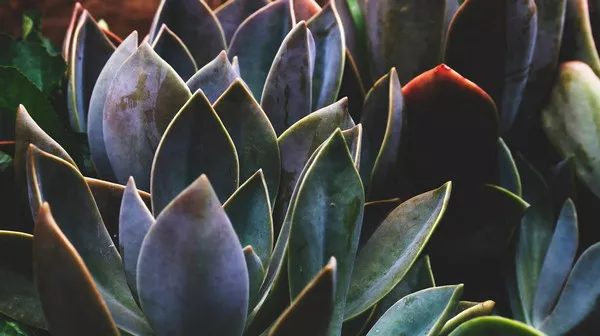Succulents, with their diverse shapes and striking appearance, have been a favorite among plant enthusiasts for their ornamental value. However, some succulents offer more than just visual appeal – they are also edible and possess unique flavors and nutritional benefits. In this article, we embark on a culinary journey to explore which succulents are edible, their health benefits, and the traditional uses of these fascinating desert plants in gastronomy and medicine.
Edible Succulents
1. Prickly Pear (Opuntia spp.): Prickly pear cactus is one of the most well-known and widely consumed edible succulents. The pads, also called nopales, and the fruits, known as tuna, are edible. The pads have a slightly tart flavor and a crunchy texture, making them a popular ingredient in salads, stir-fries, and soups. The sweet and juicy fruits are enjoyed raw, juiced, or made into jams and candies.
2. Purslane (Portulaca oleracea): Purslane is a succulent plant that is highly nutritious and widely consumed in various cuisines around the world. It has a mild, slightly peppery taste and can be used in salads, stir-fries, soups, and as a garnish. Rich in omega-3 fatty acids, vitamins, and minerals, purslane is a valuable addition to a healthy diet.
3. Aloe Vera (Aloe barbadensis miller): Known for its medicinal properties, aloe vera is also edible. The clear gel found in the leaves is used in smoothies, juices, and desserts. Aloe vera is believed to have various health benefits, including aiding digestion and supporting the immune system.
Traditional Uses of Edible Succulents
1. Indigenous Culinary Practices: Indigenous cultures in arid regions have been incorporating edible succulents into their diets for centuries. These plants were not only a source of sustenance but also an integral part of their cultural and culinary heritage. By incorporating these plants into modern cuisine, we can celebrate and preserve these traditional practices.
2. Medicinal Applications: In addition to being used as food, many edible succulents have medicinal properties. For instance, aloe vera has long been used to soothe skin irritations and promote wound healing. Traditional medicine in various cultures has utilized succulents for their therapeutic potential, and modern research is shedding light on their pharmacological properties.
Nutritional Benefits of Edible Succulents
1. Rich in Vitamins and Minerals: Edible succulents often boast high concentrations of essential vitamins like vitamin C, vitamin A, and vitamin K. They are also rich in minerals such as calcium, magnesium, potassium, and iron, which are vital for various physiological functions.
2. Antioxidant Properties: Many edible succulents are rich in antioxidants, which help neutralize harmful free radicals in the body. Regular consumption of these plants can contribute to overall health and reduce the risk of chronic diseases.
3. High Fiber Content: Edible succulents like prickly pear pads and purslane are excellent sources of dietary fiber. Fiber aids digestion, promotes gut health, and helps maintain healthy cholesterol levels.
Cultivating Edible Succulents at Home
1. Suitable Growing Conditions: Edible succulents are well-suited for cultivation in arid and semi-arid regions, and they can also thrive in containers and gardens in other climates. They prefer well-draining soil and ample sunlight to flourish.
2. Harvesting Tips: When harvesting edible succulents, it’s essential to handle them with care, especially those with thorns or spines. Use gardening gloves to protect your hands, and ensure you are picking from healthy, pesticide-free plants.
3. Culinary Uses and Recipes: Experimenting with edible succulents in the kitchen can be a delightful experience. From prickly pear cactus tacos to purslane and feta salad, there is a wide range of recipes that highlight the unique flavors of these desert plants.
Safety Precautions and Allergies
1. Identification: Before consuming any wild succulent, it’s crucial to correctly identify the plant. Some succulents may resemble edible varieties but could be toxic, leading to adverse reactions or poisoning.
2. Allergic Reactions: As with any new food, it’s essential to start with small amounts to check for allergic reactions. Individuals with allergies to latex or certain plant families, such as the cactus family (Cactaceae), should exercise caution when trying edible succulents.
3. Avoiding Pesticides and Contaminants: When foraging for edible succulents, ensure you are harvesting from areas free of pesticides and contaminants. If purchasing from a store or farmer’s market, choose organic options when available.
Conclusion
Edible succulents offer a delightful and nutritious addition to culinary exploration, combining unique flavors with numerous health benefits. From traditional indigenous practices to modern gastronomy, these desert plants have long been appreciated for their culinary and medicinal value. By understanding the safety precautions and diverse uses of these edible succulents, we can incorporate them into our diets and celebrate the rich cultural heritage and botanical diversity they bring to the table.


